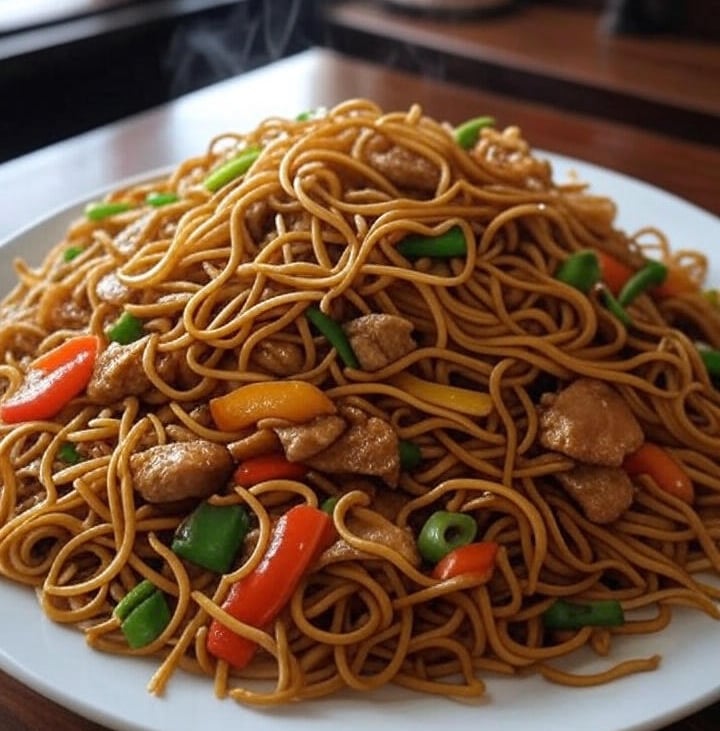Welcome to Noodles of Asia ! - A Woke Noodle Blog
Discovering Chow Mein: A Journey Through China’s Crispy Noodle Delight


Hey there, noodle enthusiasts! If you've ever enjoyed a plate of crispy or soft wheat noodles stir-fried with veggies and meat, you’ve likely tasted chow mein. This flavorful dish, a hallmark of Chinese cuisine, is loved for its satisfying crunch or tender bite and versatile flavors. Whether served as a main course or a side, chow mein brings a delightful twist to any meal. In this post, we’ll explore its origins, history, some fascinating facts, and a few famous recipes to inspire your next culinary adventure. Let’s dig in!
Origins and History of Chow Mein
Chow mein, meaning "stir-fried noodles" in Cantonese, is believed to have originated in northern China, with roots tracing back to the Qing Dynasty (1644–1912). The dish evolved from the practice of stir-frying wheat noodles, a technique that gained popularity as trade introduced new cooking methods. By the late 19th century, Chinese immigrants brought chow mein to the United States, where it was adapted into the crispy American-Chinese version we know today, especially in California. Over time, it spread globally, blending authentic flavors with local influences.
Interesting Facts About Chow Mein
Chow mein isn’t just food—it’s a cultural fusion! Here are some intriguing tidbits:
Regional Variations Galore: From Guangdong’s soft chow mein with soy sauce to Hong Kong’s crispy version with gravy, and the U.S.’s deep-fried take with veggies, each region adds its own spin.
Noodle-Making Craft: Traditionally, chow mein noodles are made from wheat flour, water, and salt, either boiled for soft texture or fried for crispiness, depending on the style.
Cultural Fusion: In the West, chow mein has inspired dishes like chow mein with taco seasoning or paired with pineapple, reflecting its adaptability.
Quick Meal Appeal: Known for its fast preparation, chow mein is a favorite for busy nights, often customized with whatever ingredients are available.
Historical Roots: Early Chinese texts mention stir-fried noodle dishes, suggesting chow mein’s deep ties to Cantonese culinary heritage.
These facts showcase chow mein’s journey from a regional dish to a global culinary icon.
Famous Chow Mein Recipes
Chow mein’s charm lies in its versatility. Here are some iconic recipes, from crispy classics to soft innovations. (Note: These are overviews—adjust to taste and check full recipes online for details.)
Chicken Chow Mein: Stir-fried soft noodles with chicken, cabbage, and soy sauce—a classic comfort dish.
Crispy Chow Mein: Fried noodles topped with a gravy of beef, mushrooms, and veggies—popular in American-Chinese cuisine.
Shrimp Chow Mein: Tender shrimp with noodles, bean sprouts, and a light oyster sauce mix—delicate and flavorful.
Vegetable Chow Mein: A vegan option with bell peppers, carrots, and broccoli, tossed in sesame oil and soy sauce.
Pork Chow Mein: Sliced pork with noodles, scallions, and a dark soy sauce blend—a traditional Cantonese favorite.
Seafood Chow Mein: A mix of shrimp, squid, and noodles in a ginger-infused stir-fry—aromatic and rich.
For a hands-on challenge, try making chow mein at home: Boil or fry wheat noodles, stir-fry with veggies and protein, and toss with your favorite sauce—or use pre-made noodles for speed.
Wrapping It Up
Chow mein noodles are more than just food—they’re a bridge from ancient Cantonese traditions to modern global kitchens, with endless variations to explore. Whether you’re craving a crispy plate on a cool evening or a soft dish in the afternoon, chow mein delivers. Next time you’re at a Chinese restaurant or in your kitchen, give one of these recipes a try. What’s your favorite chow mein style? Share in the comments—I’d love to hear! Until next time, happy slurping! 🍜
